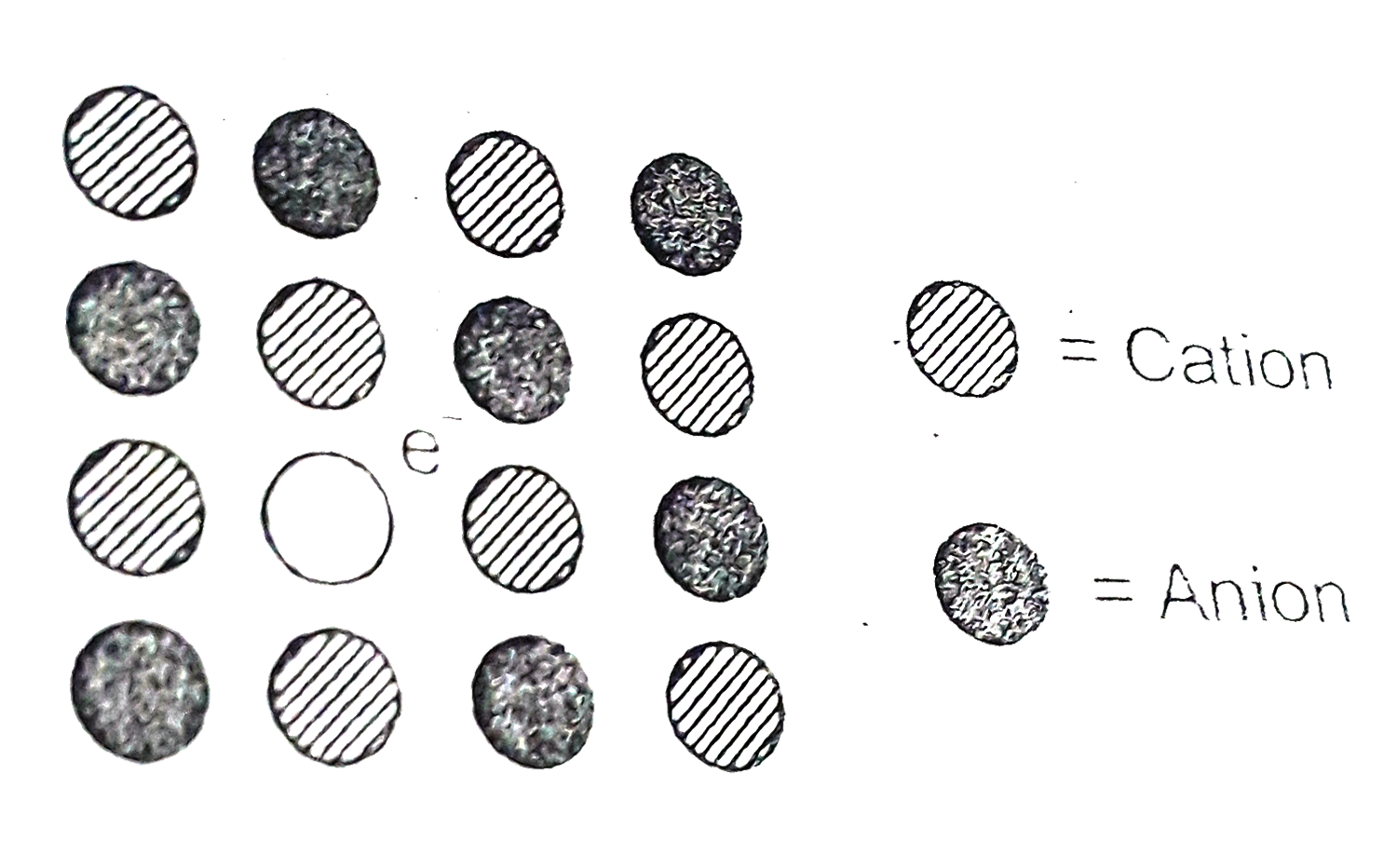Which type of defect has the presence of cations in the interstitial sites ?
Frenkel defect
Metal deficiency defect
Schottky defect
Vacancy defect
To determine the type of defect that involves the presence of cations in the interstitial sites, we can follow these steps:
1. Understanding Crystal Structure:
- In a typical ionic crystal like sodium chloride (NaCl), the structure consists of alternating cations (Na⁺) and anions (Cl⁻) arranged in a regular lattice.
2. Identifying Cation and Anion:
- In NaCl, Na⁺ is the cation and Cl⁻ is the anion. The cations occupy specific lattice sites in the crystal structure.
3. Defect Types in Crystals:
- There are two main types of defects in ionic crystals:
- Frenkel Defect: This occurs when a cation (or anion) is missing from its lattice site and occupies an interstitial site instead.
- Schottky Defect: This occurs when both a cation and an anion are missing from the lattice, resulting in vacancies.
4. Analyzing the Given Situation:
- The question specifies that we are looking for a defect where cations are present in the interstitial sites. This indicates that some cations are missing from their regular lattice positions and have moved to interstitial positions.
5. Conclusion:
- Since the defect involves cations occupying interstitial sites, it is classified as a Frenkel defect. In this defect, the cation leaves its lattice position and occupies an interstitial site, while the anion remains in its original position.
Final Answer:
The type of defect that has the presence of cations in the interstitial sites is called the Frenkel defect.
---
- In a typical ionic crystal like sodium chloride (NaCl), the structure consists of alternating cations (Na⁺) and anions (Cl⁻) arranged in a regular lattice.
- In NaCl, Na⁺ is the cation and Cl⁻ is the anion. The cations occupy specific lattice sites in the crystal structure.
- There are two main types of defects in ionic crystals:
- Frenkel Defect: This occurs when a cation (or anion) is missing from its lattice site and occupies an interstitial site instead.
- Schottky Defect: This occurs when both a cation and an anion are missing from the lattice, resulting in vacancies.
- The question specifies that we are looking for a defect where cations are present in the interstitial sites. This indicates that some cations are missing from their regular lattice positions and have moved to interstitial positions.
- Since the defect involves cations occupying interstitial sites, it is classified as a Frenkel defect. In this defect, the cation leaves its lattice position and occupies an interstitial site, while the anion remains in its original position.
The type of defect that has the presence of cations in the interstitial sites is called the Frenkel defect.
Topper's Solved these Questions
- THE SOLID STATEBook:VMC MODULES ENGLISHChapter:THE SOLID STATEExercise:JEE Advance ( Archive )
Explore 27 Videos
- THE SOLID STATEBook:VMC MODULES ENGLISHChapter:THE SOLID STATEExercise:FUNDAMENTAL
Explore 50 Videos
- THE SOLID STATEBook:VMC MODULES ENGLISHChapter:THE SOLID STATEExercise:LEVEL-2 (Numerical Value Type for JEE Main )
Explore 15 Videos
- SURFACE CHEMISTRYBook:VMC MODULES ENGLISHChapter:SURFACE CHEMISTRYExercise:PRACTICE EXERCISE
Explore 9 Videos
- THEORY OF SOLUTIONSBook:VMC MODULES ENGLISHChapter:THEORY OF SOLUTIONSExercise:JEE Advanced (Archive)
Explore 31 Videos
Similar Questions
Which type of defect’ has the presence of cations in the interstitial sites?
View SolutionAssertion (A) : Non-stoichiometric compounds are called Bertholide compounds. NaCl and KCl crystal, when heated in an atmosphere of Na and K varpours, respectively, they impart violet and yellow colours to NaCl and KCl, respectively.
Reason (R ) : Metal excess defect is due to the presence of extra cations atg the interstitial sites. The excess metal ions move to the interstitial sites and the electrons to the neighbouring sites. The colour results byt the excitation of these electrons by absorbing suitable energy from visible light. When the excited electroon comes back to the ground state, there is emission of radiation in the visible region and gives complimentary colour.
View Solution
Knowledge Check
Cations are present in the interstitial sites in
AFrenkel defectBSchottky defectCVacancy defectDMetal deficiency defectCations are present in the interstitial sites in …………… .
AFrenkel defectBSchottky defectCVacancy defectDmetal deficiency defect
Cations are present in the interstitial sites in …………… .
View SolutionWhat are voids or interstitial sites ?
View SolutionWhich halogen has the tendency to form cations?
View SolutionWhat type of defects are represented by given figure ?

View SolutionThe type of gene, which in the presence of contrasting allele, is not expressed.
View SolutionWhat is the point defect due to the presence of foreign atom ? Explain with suitable example.
View Solution